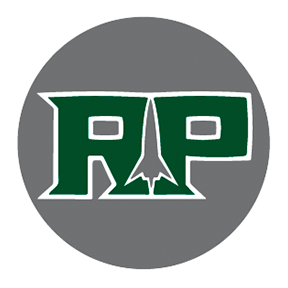The Great Lakes are home to four different species of salmon: Coho, Chinook, Pink, and Atlantic. This year, Reeths-Puffer will be home to one of these species—the Chinook Salmon. The Michigan DNR Salmon in the Classroom program allows classes of 3rd to 12th graders to raise salmon and learn about conservation and the environment. With the help of the Muskegon Sportfishing Association, which provided a generous grant, one teacher at Reeths-Puffer High School will soon raise roughly 150 salmon.
What Are They?
Also known as King Salmon, Chinook are the largest Pacific Salmon and can weigh up to 130 lbs; however, they usually average around 30 lbs. These monster fish were first introduced to the Great Lakes in 1967 to help control the alewife population, but now they are a staple of our ecosystem. Chinook salmon spawn on gravel beds in streams and then die off about two weeks later. In the spring, the eggs hatch, and the young salmon stay in the stream for a year, eating insects and crustaceans before eventually venturing to Lake Michigan. In the lake, the males live for 1-2 years, and the females live for 3-4 years, mainly surviving on a diet of smelt and alewives. This cycle continues to improve the biodiversity of the Great Lakes and enhance our ecosystem.
(Photo from Daniel Dunn, Jobsite Sportfishing)
How Will They Help Our Learning?
In the classroom, the salmon will help students conduct various tests that are difficult to perform during the winter in Michigan, such as water quality testing. It will allow students to engage in hands-on activities and even have the chance to raise a living part of our ecosystem. John Smit, one of Reeths-Puffer’s environmental science teachers, said, “I’m excited to have an actual thing to do some of those hands-on activities with. When winter comes around, it's harder to do more outside hands-on learning, so having the ‘in the classroom’ experience is very beneficial to learning more environmental science concepts.” When asked what she was excited about, student Grace Darke said, “I'm excited to see how they come out. Since they are in a big hatch, some may come out with mutations (two heads, etc.), so I'm excited to see what they come out as.” Another student, Gracie Calander said, “I think it's pretty cool to see how they will grow over the next couple of months; it makes the class interesting and engaging.” Mrs Reckenagle also shared some information about the salmon experiment. “The elementary students at RP are also participating in Salmon in the Classroom,” she explained. This makes it even more exciting, as the younger students also get to be a part of a hands-on experience for their learning.
(Photo from Addison Jourden)
What Will Happen When They Get Too Big?
Eventually, the fish will need to be released. While the teachers aren’t sure exactly where they plan to release them, when springtime comes around, the salmon will be released into a river leading to Lake Michigan. Mrs Reckenagel added, “ I know there have been discussions about how to make the ‘release day’ of the salmon a community event that more people can participate in.” The hope is that they will make it to the lake, where they can grow and eventually return to reproduce. The goal of this experience is to sustain this cycle for many years so that everyone can continue to enjoy the salmon in our environment.
(Photo from Addison Jourden)
Written by: Morgan Rekeny and Addison Jourden

